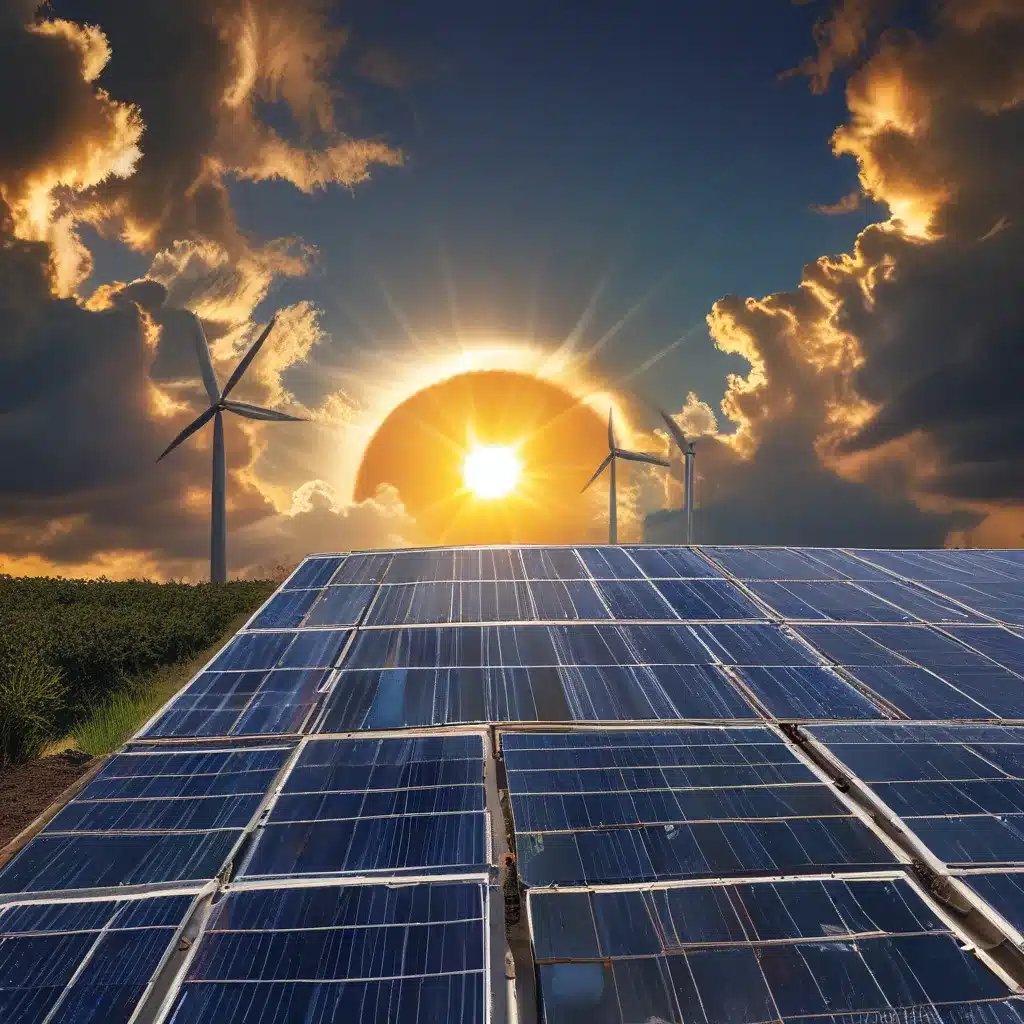
The Power of the Sun: Unlocking a Brighter, Greener Future
I’ll admit, when I first heard the term “solar energy,” I imagined a group of hippies in the 1970s, sporting tie-dye shirts and sandals, trying to power their VW buses with a few flimsy solar panels. Boy, was I wrong. The solar industry has come a long way since then, and it’s time we set the record straight.
As an analyst and observer of the transition to a lower-carbon energy economy, I’ve seen firsthand the remarkable advancements in solar technology. Gone are the days of inefficient, bulky panels. Today’s solar solutions are sleek, efficient, and capable of powering entire communities without a single puff of carbon emissions.
The Evolution of Solar: From Niche to Mainstream
Let’s rewind a bit. Over the past decade, the clean energy industry has undergone a remarkable transformation. Costs have plummeted, technology has become more efficient, and solutions for integrating renewable sources into the grid have advanced by leaps and bounds.
Studies have consistently shown that when wind or solar energy is available, it displaces energy produced by natural gas or coal-fired generators. This means that as renewable sources like solar continue to grow, they’re actively reducing our carbon footprint.
In fact, the U.S. Energy Information Administration (EIA) has projected that most of the new electric generation added in the U.S. in 2020 could come from wind and solar, with new natural gas plants representing less than a quarter of new capacity. And let’s not forget the steady retirement of coal-fired power plants, which have been shutting down at a record pace.
Debunking the Myths: Solar Energy’s True Impact
I know what you’re thinking: “But what about all the issues with renewable energy that the documentary ‘Planet of the Humans’ highlighted?” Well, let me set the record straight on that.
The filmmakers behind “Planet of the Humans” have used outdated information and misconceptions to discredit the value of clean energy technologies. The reality is that the clean energy industry has evolved significantly, and the folks working tirelessly to advance solar solutions are not the enemy – they’re the heroes we need.
Countless studies have found that by displacing fossil fuel generation, renewable energy sources like solar are actively reducing CO2 emissions. In the western U.S. alone, a study by the National Renewable Energy Laboratory (NREL) found that generating 35% of electricity using wind and solar would reduce CO2 emissions by 25-45%.
The Bright Future of Solar Energy
Now, I know what you’re thinking: “Okay, so solar is better than fossil fuels, but how does it stack up against other renewable sources?” Well, let me break it down for you.
According to our friends at Our World in Data, solar energy is one of the safest sources of energy we have, with an extremely low mortality rate per unit of energy produced. In fact, it’s even safer than wind power!
And let’s not forget the economic benefits of solar. In 2019, wind (91GW) and solar (53GW) represented 62% of all new generating capacity in the U.S., compared to just 83GW of natural gas. That’s a clear sign that the market is embracing solar in a big way.
But the real game-changer is the ability of solar to integrate seamlessly with the grid. Unlike natural gas, which requires complex infrastructure like liquefied natural gas (LNG) terminals to transport and distribute, solar energy can be generated right where it’s needed – on rooftops, in fields, or even in the middle of the desert.
And let’s not forget the environmental benefits. While natural gas may be cleaner than coal, it still contributes to greenhouse gas emissions. Solar, on the other hand, is a true zero-emission solution, providing electricity without a single puff of carbon.
Bringing Solar Home: The Rise of Residential Solutions
But solar isn’t just about large-scale, utility-scale projects. The residential solar market is booming, too. Homeowners across the country are realizing the benefits of installing solar panels on their roofs, and the numbers speak for themselves.
In 2019, the U.S. installed a whopping 2.8 gigawatts of residential solar capacity, a 15% increase from the previous year. And the best part? Companies like Solar Asystems Inc. are making it easier than ever for homeowners to go solar, with affordable financing options and hassle-free installation.
Just imagine: your very own solar-powered oasis, generating clean, renewable electricity right from the comfort of your own home. No more relying on the grid, no more worrying about carbon emissions. It’s a win-win for you and the planet.
The Solar Revolution: Empowering Communities, Powering the Future
But the benefits of solar don’t stop at the individual level. Communities across the country are embracing solar as a way to reduce their carbon footprint and build a more sustainable future.
Take the small town of Greensburg, Kansas, for example. After a devastating tornado ripped through the town in 2007, the community made the bold decision to rebuild as a sustainable, eco-friendly model for the rest of the country. Today, Greensburg boasts the nation’s highest per-capita use of wind and solar power, with the majority of its electricity coming from renewable sources.
And it’s not just small towns getting in on the solar action. Major cities like Los Angeles, San Diego, and New York are all setting ambitious goals to transition to 100% renewable energy, with solar playing a crucial role in their plans.
As we look to the future, it’s clear that solar energy is poised to be a key player in the fight against climate change. With the rapid advancements in technology, the plummeting costs, and the growing demand for clean, renewable solutions, the solar revolution is well underway.
So, the next time you hear someone spouting outdated information about renewable energy, remember this: solar is the future, and it’s brighter than ever.


